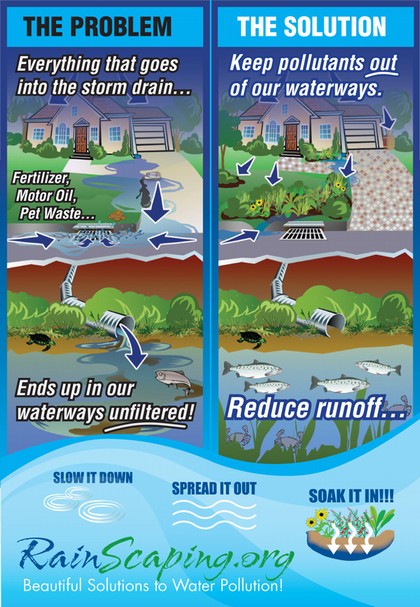Join us in adding a few more Water saving activities to your life this year.
How many of these will you do in 2018? Let us know…..
- Build a Rain Garden…
- Sheet mulch your water-thirsty lawn and plant veggies, herbs, flowers for bees and native plants…
- Set up a greywater system…
- Install low flow fixtures…
- Install drip irrigation.
- Record your monthly water use and look for places to reduce.
- Fix the leaks—dripping faucets, running toilets, old pipes, broken irrigation lines.
- Take shorter showers, and showers instead of baths.
- Use a bucket to catch water while the shower is heating and use it to flush toilets or water plants.
- Sculpt the earth to slow, spread and sink rainwater at the roots of your plants.
- Spread a thick layer of mulch on your garden beds (2-4 inches) to retain soil moisture.
- Plant densely to shade soil and reduce evaporation.
- Catch rainwater from your roof in tanks for irrigation during the dry season.
- Pee outside to save water and fertilize your trees — use tasteful judgment and be sure to spread it around!
- Keep it clean—switch to biodegradable, non-toxic soaps and cleaning products.

Going Deeper (Water)
- Integrate — a greywater system can feed a food forest which provides shade to cool a building or sitting area.
- We don’t have a water shortage, we have a storage shortage— try and capture and retain every drop of rain that falls on your site in mulch, earthworks or tanks.
- Mulch, mulch, mulch to increase the water retaining “living sponge” on your site.
- Place plants to act as living pumps to take advantage of water stored in mulch and soil.
- Plant plants that can be chopped as mulch to replenish the “living sponge” in the catchment basins.
- Design earthworks to double as paths and mulch retention basins
- Place rainwater tanks to act as thermal buffers, creating beneficial micro-climates for plants.
- Go even further—direct offsite water from the street or neighbors to sink into your site (be mindful of absorption capacity and design accordingly, mismanage water can be destructive).
Additional Resources (Water)
- How to sheet mulch your lawn video
- Slow it. Spread it. Sink it—A Guide to Beneficial Stormwater Management
- Greywater Action — ideas for a sustainable water culture
- Wholly H2O — all thing water
- Occidental Arts and Ecology Center’s WATER Institute — for DIY guides and much more
- Transition US’s own Trathen Heckman: Creating a Home Greywater System Video
- Brad Lancaster’s Harvesting Rainwater for Drylands and Beyond
**Picture of water at the top of the page is courtesy of http://www.everbluetraining.com
This list is courtesy of the Transitions US Community Resilience Challenge.
